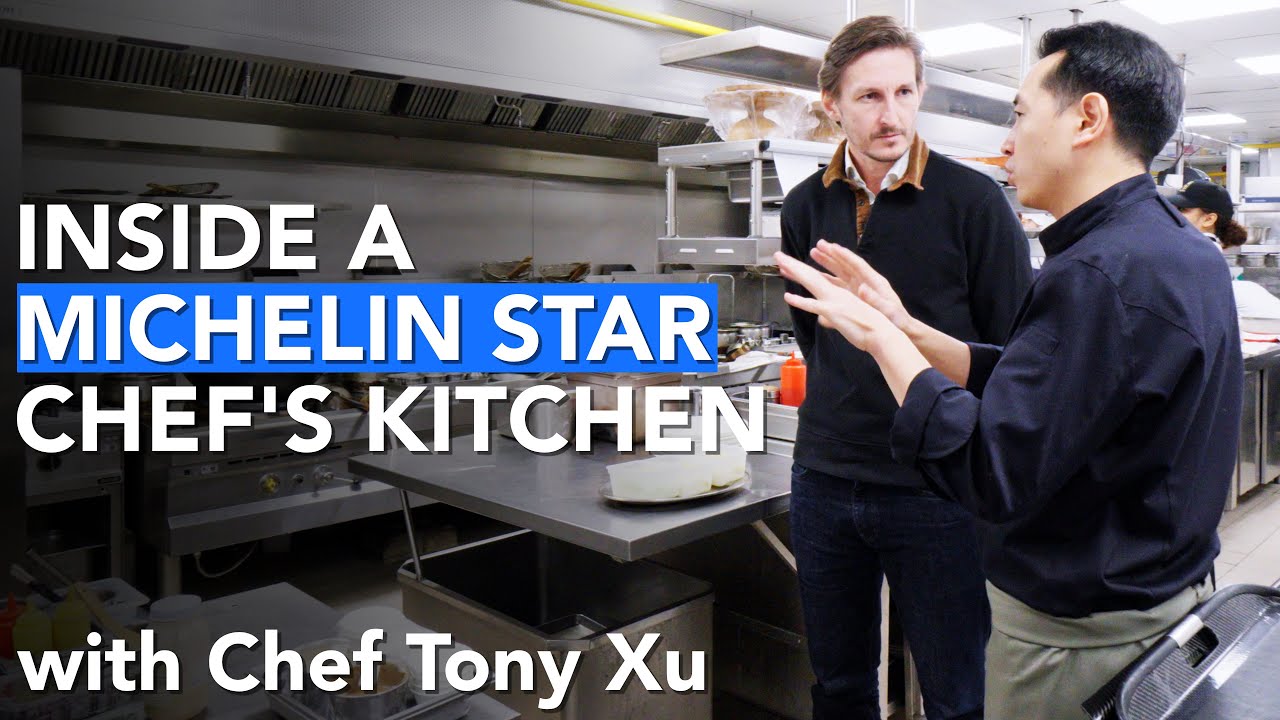
Chamberlains of London – Chef Tony Xu is a name that has become synonymous with modern Cantonese innovation. Born in Guangzhou and trained internationally, Chef Tony Xu brings together tradition and scientific technique to present a new face of Chinese cuisine. His approach blends the delicate flavors of classic Cantonese dishes with the experimental techniques of molecular gastronomy. At his restaurants in Beijing and Vancouver, diners are introduced to a culinary world where precision, emotion, and cultural heritage coexist on every plate.
Chef Tony Xu began his culinary journey in the family kitchen. From a young age, he learned the fundamentals of Cantonese cuisine through observation and repetition. He understood the importance of freshness, balance, and technique. Early exposure to wok mastery, seafood preparation, and dim sum shaping shaped his foundational knowledge. These experiences formed the basis of his philosophy as a chef. After years of local training, he traveled to Europe to study modernist cuisine. There, he was introduced to molecular methods such as spherification, emulsification, and liquid nitrogen freezing. These tools were not used for novelty but were studied for how they could enhance traditional dishes. The balance between old and new became central to his culinary identity.
“Read about: Boston’s Culinary Boom: New Hotspots Light Up the Food Scene”
Back in Asia, Chef Tony Xu opened his flagship restaurant and began shaping his culinary vision. He reimagined classic Cantonese dishes and introduced bold updates to the menu. For example, he filled shrimp dumplings with truffle-scented foam and served soy-glazed sea bass on kombu-based edible paper. Consequently, each plate offered familiar flavors with unfamiliar textures and presentations. Diners responded with enthusiasm and curiosity. Moreover, this fresh language of cooking enabled Chef Tony Xu to reach a broader audience. He blended heritage with innovation and combined memory with science. As a result, each dish delivered both a sensory experience and a cultural dialogue. In addition, culinary critics and international food festivals quickly took notice of his unique approach. Ultimately, Chef Tony Xu set a new standard for modern Cantonese cuisine through creativity and refinement.
Chef Tony Xu leads a dedicated team of food scientists and engineers. They analyze the chemistry behind traditional Chinese ingredients. The team uses techniques like freeze-drying, vacuum infusion, and centrifugation to bring out the purest flavors. They test ingredient pairings by examining aroma compounds. They carefully track cooking temperatures to maintain ideal texture and nutritional value. In one signature dish, they place a lotus root chip above a steaming bowl of five-spice broth. As the chip melts into the liquid, it gradually transforms the flavor. The team plans every detail of this interaction between temperature, structure, and taste through precise testing and deliberate design.
“Read more: Design Your Garage Around Your Lifestyle: From Gearheads to Adventurers”
Chef Tony Xu treats the dining table as a stage. Each plate tells a story. He enhances the dining experience through lighting, sound, and scent. He arranges courses to follow a narrative arc. Some dishes arrive under glass domes filled with aromatic fog. Servers, trained in choreographed movements, assemble others directly at the table. Designers create custom utensils and plates to emphasize textures. They select color contrasts carefully to heighten visual appeal. In one dish, he places lotus root pearls in aged vinegar gel on a slab of chilled black slate. The presentation recalls Chinese ink painting and maintains the ideal temperature. These design choices go beyond decoration. They express the intention behind the food. Diners engage not only their palates but also their senses as they experience the transformation of tradition into living art.
Chef Tony Xu invests heavily in mentorship. He believes tradition survives only through reinvention. At his culinary institute in China, young chefs study both classic Cantonese techniques and the fundamentals of molecular gastronomy. Instructors encourage students to craft new dishes while preserving core flavor structures. The institute organizes workshops and masterclasses throughout the year. Visiting chefs from around the world join collaborative fusion projects. The program celebrates innovation but always connects each creation to its cultural roots. Instructors teach students to respect ingredients, tell meaningful stories, and think beyond borders. Graduates now lead kitchens across Asia, Europe, and North America. Many bring back fresh ideas, enriching the creative exchange between global inspiration and local identity.
Chef Tony Xu continues to push the boundaries of what Cantonese food can be. His restaurants appear on international best-of lists. Culinary magazines praise his ability to merge history and futurism. Critics highlight the emotional quality of his cooking. Every year, he speaks at global culinary summits, sharing his ideas on how cuisine can reflect societal change. He does not see innovation as a rejection of tradition but as a continuation. Recipes handed down through generations are respected and studied. Their essence is preserved even as the form evolves. In this way, culture is kept alive. Chef Tony Xu has not just redefined Cantonese cuisine. He has turned it into a dynamic conversation between taste, memory, and imagination.